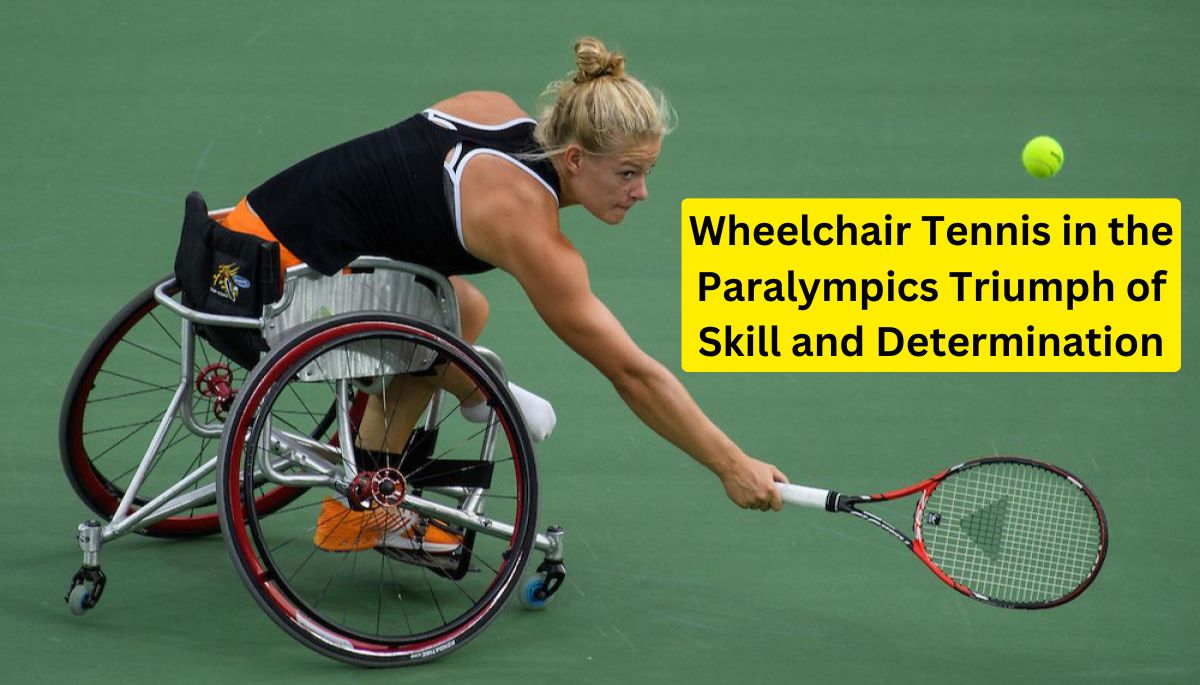
Wheelchair Tennis in the Paralympics Triumph of Skill and Determination
Wheelchair tennis has emerged as one of the most thrilling and inspiring sports in the Paralympics, showcasing not only the remarkable athleticism of its participants but also their unwavering spirit and determination. The sport, which has grown exponentially in popularity and competitiveness, holds a special place in the hearts of both players and fans worldwide. As we approach the Paris 2024 Paralympics, the excitement is palpable, with top athletes preparing to compete in what promises to be a spectacular display of skill, strategy, and resilience.
In this article, we’ll explore the rich history of wheelchair tennis, its rules and classifications, and the key players to watch in the upcoming Paralympics. We’ll also delve into the training regimes of these elite athletes and the unique challenges they face. Finally, we’ll look at the impact of wheelchair tennis on the broader Paralympic movement and its role in promoting inclusion and equality.Wheelchair Tennis in the Paralympics Triumph of Skill and Determination
The Origins of Wheelchair Tennis
Wheelchair tennis was first introduced in the 1970s by Brad Parks, an American athlete who sustained a spinal cord injury in a skiing accident. Inspired by the desire to continue playing tennis, Parks adapted the game to accommodate wheelchair users, and thus, wheelchair tennis was born. The sport quickly gained traction, with the first official tournament held in 1977.
The Paralympic Games first included wheelchair tennis as a demonstration sport in Seoul in 1988, and it became an official medal event at the Barcelona 1992 Paralympics. Since then, the sport has grown rapidly, with more than 100 countries now participating in international wheelchair tennis competitions.
Understanding the Rules and Classifications
The rules of wheelchair tennis are similar to those of able-bodied tennis, with a few key modifications to accommodate the unique needs of the athletes. The most significant difference is the “two-bounce rule,” which allows the ball to bounce twice before being returned, with the second bounce allowed outside the court. This modification ensures that the sport remains competitive and accessible to players with varying levels of mobility.
Wheelchair tennis players are classified based on their level of physical impairment. The two main classifications are:
- Open Division: For athletes with impairments in one or both legs who do not have significant impairment in their arms.
- Quad Division: For athletes with impairments in both their legs and arms, requiring additional modifications to their equipment and play style.
The Road to Paris 2024
As we look ahead to the Paris 2024 Paralympics, several top players are expected to dominate the competition. These athletes have demonstrated exceptional skill, dedication, and resilience, making them favorites to take home the gold.
Shingo Kunieda
Shingo Kunieda of Japan is widely regarded as one of the greatest wheelchair tennis players of all time. With numerous Grand Slam titles and Paralympic gold medals to his name, Kunieda has set the standard for excellence in the sport. His tactical intelligence, powerful shots, and relentless work ethic have made him a formidable opponent on the court.
Diede de Groot
In the women’s division, Diede de Groot of the Netherlands is a name to watch. De Groot has been a dominant force in wheelchair tennis, consistently ranking as the world number one. Her aggressive playing style, combined with her mental toughness, has earned her multiple Grand Slam titles and Paralympic gold medals.
David Wagner
In the Quad Division, American David Wagner is a standout player. Known for his exceptional hand-eye coordination and strategic play, Wagner has been a consistent performer in international competitions. His experience and skill make him a strong contender for the top spot at the Paris 2024 Paralympics.
The Training Regimes of Elite Wheelchair Tennis Athletes
The training routines of wheelchair tennis players are as rigorous and demanding as those of any elite athlete. These athletes must develop not only their tennis skills but also their strength, endurance, and mental resilience.
Physical Conditioning
Wheelchair tennis players undergo intense physical conditioning to enhance their upper body strength, core stability, and cardiovascular endurance. This training is crucial for maintaining the agility and power needed to maneuver the wheelchair quickly and effectively during matches.
Technical Training
Technical training focuses on improving the athletes’ stroke mechanics, serve accuracy, and overall court strategy. Coaches work closely with players to refine their techniques, ensuring they can consistently execute powerful and precise shots under pressure.
Mental Preparation
Mental toughness is a critical component of success in wheelchair tennis. Athletes often work with sports psychologists to develop strategies for managing stress, maintaining focus, and staying motivated throughout the competition. Visualization techniques and mindfulness practices are commonly used to enhance mental preparation.
The Unique Challenges of Wheelchair Tennis
Wheelchair tennis players face several unique challenges that set their sport apart from able-bodied tennis. These challenges require not only physical strength but also strategic thinking and adaptability.
Maneuvering the Wheelchair
One of the most significant challenges in wheelchair tennis is maneuvering the wheelchair quickly and efficiently on the court. Players must be able to change direction rapidly, maintain balance, and position themselves for optimal shot placement—all while propelling the wheelchair using only their upper body strength.
Equipment Adaptations
The equipment used in wheelchair tennis is specially designed to meet the needs of the athletes. Wheelchairs are lightweight, with angled wheels that allow for greater stability and mobility. Additionally, athletes in the Quad Division may use modified rackets with straps to accommodate their limited grip strength.
Balancing Speed and Precision
In wheelchair tennis, players must strike a delicate balance between speed and precision. While quick movements are essential for reaching the ball, players must also maintain control and accuracy in their shots. This requires a high level of coordination and skill, particularly when executing complex maneuvers such as serves and volleys.
The Impact of Wheelchair Tennis on the Paralympic Movement
Wheelchair tennis has had a profound impact on the Paralympic movement, helping to raise awareness of the abilities and achievements of athletes with disabilities. The sport’s inclusion in the Paralympics has not only provided a platform for elite competition but has also played a significant role in promoting social inclusion and challenging stereotypes about disability.
Raising Awareness and Inspiring Others
The visibility of wheelchair tennis in the Paralympics has inspired countless individuals around the world to pursue sports and physical activity, regardless of their physical abilities. The stories of these athletes serve as powerful reminders of the human spirit’s resilience and determination.
Promoting Inclusion and Equality
Wheelchair tennis has also contributed to the broader conversation about inclusion and equality in sports. By showcasing the talents of athletes with disabilities on an international stage, the sport has helped to challenge preconceived notions about disability and has advocated for greater accessibility and opportunities in all areas of life.
Conclusion
As we look forward to the Paris 2024 Paralympics, wheelchair tennis stands as a testament to the power of perseverance, skill, and determination. The athletes who compete in this sport are not only exceptional tennis players but also role models who embody the true spirit of the Paralympic Games. Whether you’re a long-time fan or new to the sport, there’s no doubt that the upcoming Paralympics will deliver unforgettable moments of triumph and inspiration.
The future of wheelchair tennis is bright, with new talents emerging and the sport continuing to grow in popularity. As the world watches these incredible athletes take to the court, we are reminded of the limitless potential of the human spirit and the importance of celebrating diversity and inclusion in all forms.



